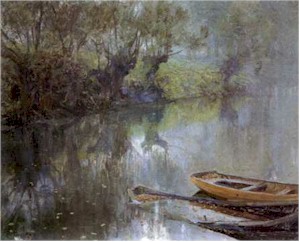|
BARATARIA-TERREBONNE
NATIONAL ESTUARY
The 4.2 million acre Barataria
Basin and Terrebonne Basin system of the Gulf Coast
Region supports wildlife habitat for approximately
735 species of native and migratory birds, fish,
shellfish, mammals, reptiles, and amphibians.
The area is also home to a unique culture and people
whose way of life was born out of these wetlands.

Home to a great variety of species
and a unique culture of people
Over many years, the Barataria-Terrebonne National Estuary suffered losses
to wetlands habitats and ecosystem functions from erosion, sediment loss, sea-level
rise, salt water intrusion, canal dredging, and
construction and changing of the natural flow of the
Mississippi River. The
wetlands formerly were naturally replenished year after year
from sediments carried in the mighty Mississippi River from up
north to be deposited before reaching the sea. But, after
much human re-engineering of the natural water system, those sediments
were sped along man-made navigation channels straight out to the
deep waters of the sea. Known as "The Brown Marsh," no other place on Earth
was disappearing as quickly as
the Barataria-Terrebonne, due to changes in waterflow, sediment reduction,
habitat loss, over-abundance of nutrients in water, bacterias and
viruses in water, toxic chemicals in water, and changes in the living
resources (birds, fish and other animals). Plans were being laid
for restoring the coastal Louisiana wetlands
systems and strengthening protective areas. Various
proposed projects were being studied and considered, and funding
for such a massive undertaking was being sought.
But the rebuilding did
not come soon enough...and a mighty force of
nature was on the way.

Hurricane !

Taken from Satellite, looking down
into the
eye of the hurricane as it rages towards land
In August and September of 2005,
long-feared catastrophic damage from
hurricane winds and resulting storm surges and flooding
caused devastating damage to America's
southeastern states in the Gulf Coast Region; particularly
Louisiana, Mississippi and Alabama. During this period, the Barataria-Terrebonne estuarian system in south Louisiana was
severely impacted from the storm-related destruction of
"Katrina" and "Rita" - two
major hurricanes in one month's time.
Lost to the ravages of the storm and resulting
floodwaters were whole fishing villages, rice and sugarcane fields, shrimping ports, ranches, pasturelands, cities, towns, rural
areas, businesses, industry; and further substantial loss
of species, plants, grasslands and trees. Coastal habitat
was destroyed. Saltwater from the Gulf of Mexico
raced inland from the storm surge and freshwater species died as
a result. There was nothing to stop the waves from their
destruction. Also carried in those waters were the sewage,
oil, chemicals, industrial waste, and toxins that were spilled or released from
their containments. The hazardous contaminants permeated everywhere,
and were carried both out to sea and inland. What remained in many
neighborhoods were bricks, splinters, muck,
flood waters, and toxins - making areas
unlivable. Hundreds of thousands of people were left homeless,
and most tragic was loss of life.

"Aftermath of Destruction"
Graphic: S. Sherwood
Images of
CATASTROPHIC Damage - After you see the devastating and
heartbreaking pictures of the massive damage caused by the
forces of these storms and floodwaters, please keep our friends
in the Gulf Coast states in mind as they go through a very long
period of recovery. Hurricane Katrina has left nearly a
million people displaced, thousands of homes and businesses
destroyed, and, worst of all, people wounded, missing, or
dead. Thousands have lost their family homes, incomes, and
belongings dear to them; and some have lost loved ones.
Please offer your help and friendship by donating as much as you
can. Ways you can help get involved in relief efforts, or
donate to credible relief organizations may be found on
How Can I
Help? on the Barataria-Terrebonne National Estuary
Program site. Holiday times and special occasions (such
as faith-based holidays and gatherings, weddings, birthdays, anniversaries, and such) are
also times when we need to remember others who are less
fortunate and in dire need. You can turn these good
thoughts into action and help by sending
donations to official, credible, charity organizations.
Please visit the Help link and contact one of the organizations
listed. Helping others is also a gift to ourselves - good
medicine for the soul.
The
Barataria Terrebonne Estuary
Definition of an "estuary," and
map of the Barataria Terrebonne system
"Louisiana coast no longer as nature intended" (USA
Today, 10/2/05)
Barataria Terrebonne
National Estuary Program
Hurricanes - A Fierce Force of Nature (NASA)
Learn how hurricanes are created. Interactive
cross-section of a hurricane shows an anatomy of the
dynamics of a hurricane.
Closeups of Katrina at her meanest (NOAA hurricane hunters)
Katrina Coming Ashore on August 29, 2005
(Photo: USAF)
"Oil
Spills from Hurricanes Staining the Coast" (ENN,
Houston Chronicle article 11/14/05)
More than a stain - a major environmental disaster
"Gone with the Water" - Feature story from
National Geographic almost one year prior to
the August and September 2005 hurricanes of the Gulf
Coast.
| "When you
look at the broadest perspective,
short-term advantages can be gained by
exploiting the environment. But in the
long term you're going to pay for it." |
| |
Joe
Suhayda, Engineer
Louisiana State University |
Louisiana
Wetland Plant and Animal List
(scroll 3/4
way down the page)
Educational
materials are available by contacting the Estuary Program. |


